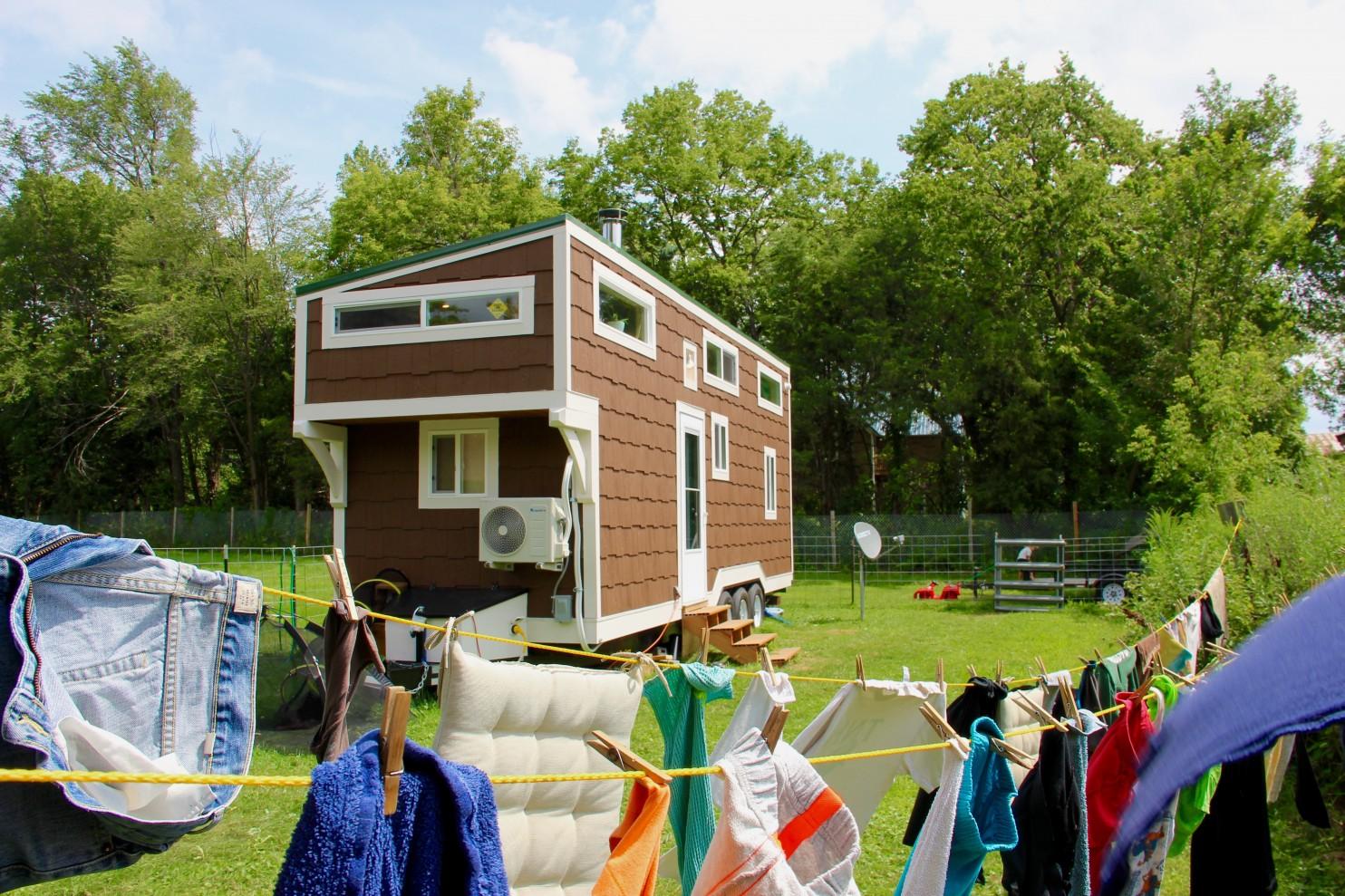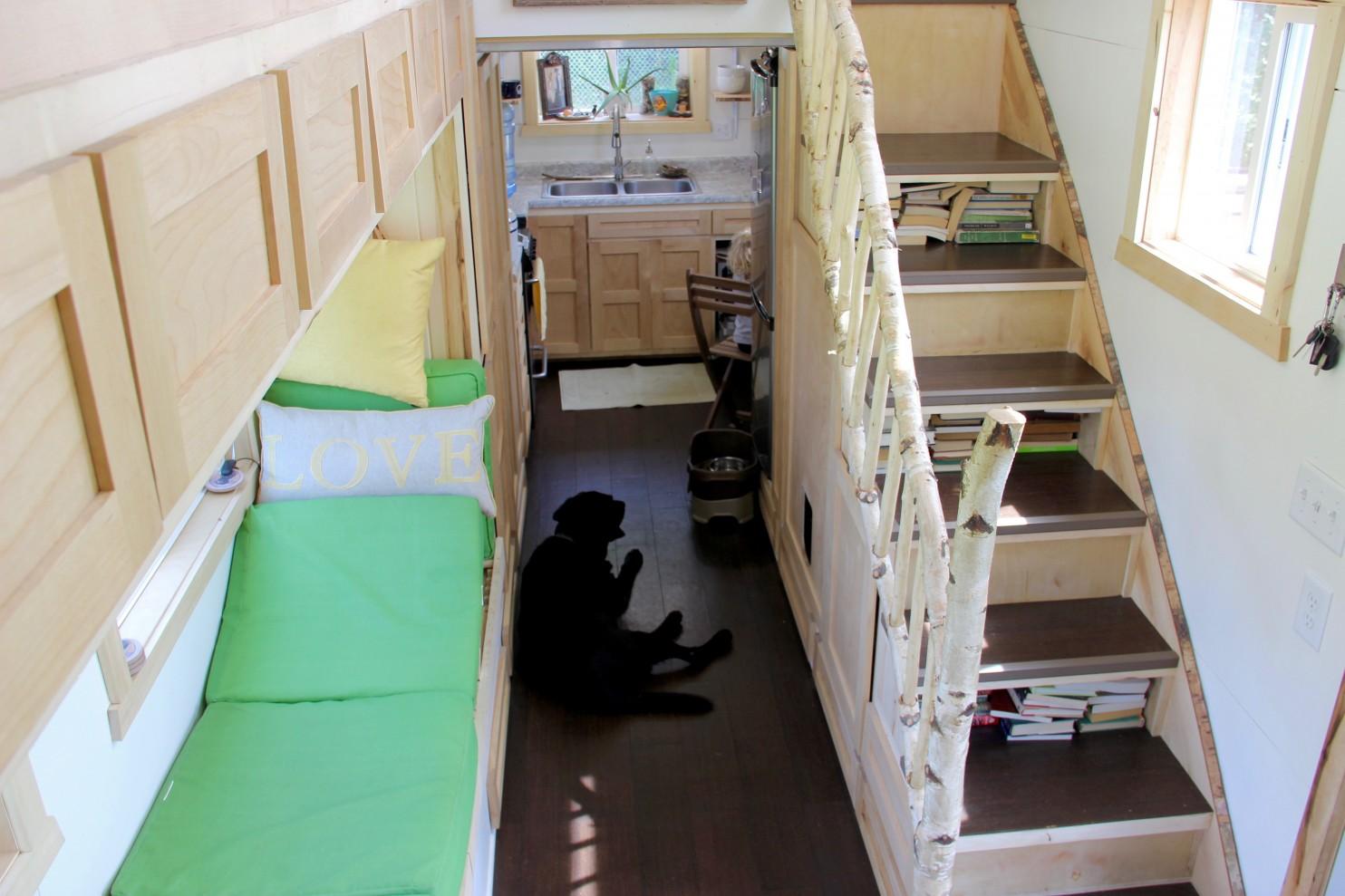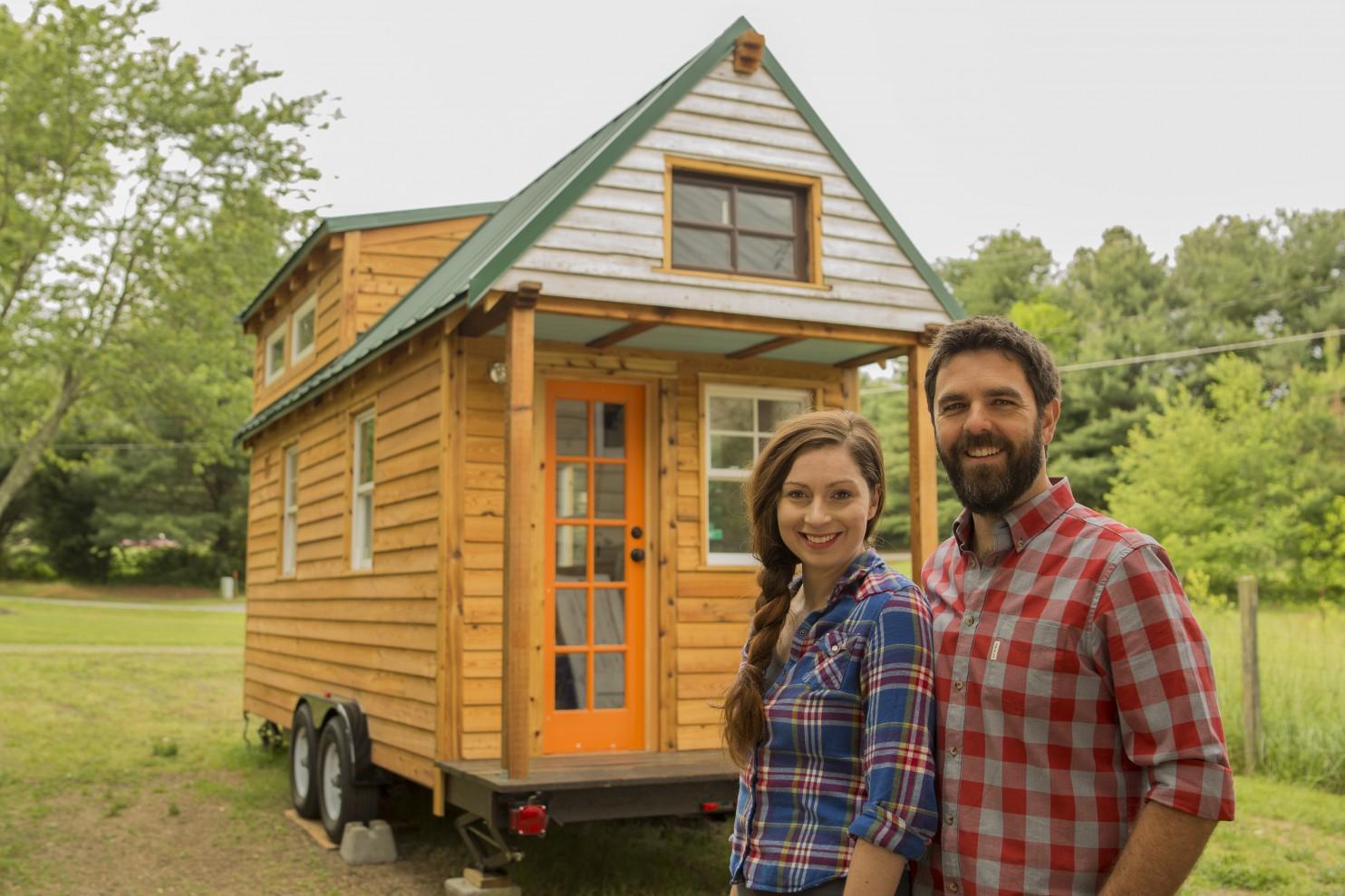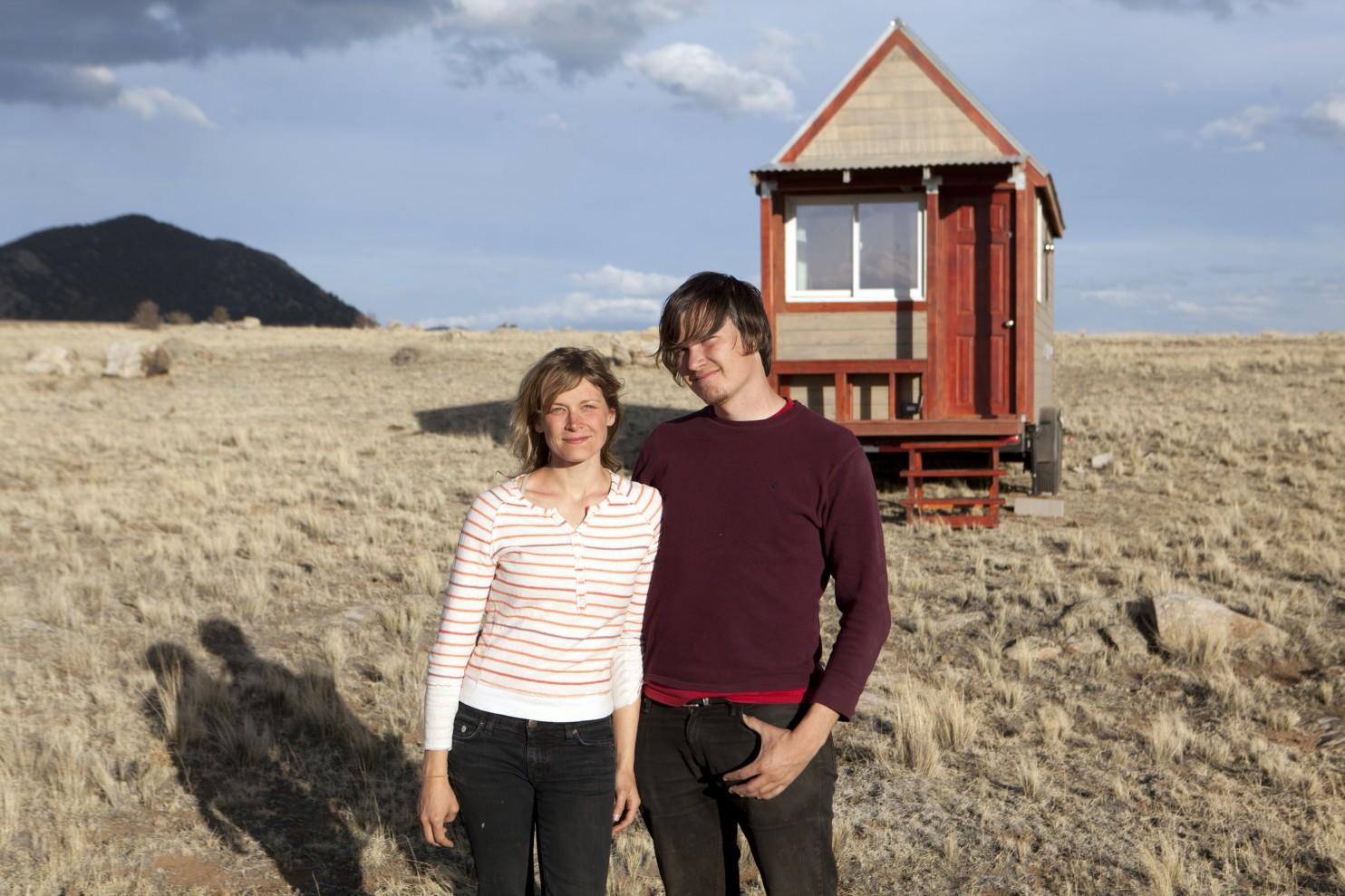How do couples live in tiny homes without killing each other?
Advice from couples who've survived cohabiting in 200 square feet

Your support helps us to tell the story
From reproductive rights to climate change to Big Tech, The Independent is on the ground when the story is developing. Whether it's investigating the financials of Elon Musk's pro-Trump PAC or producing our latest documentary, 'The A Word', which shines a light on the American women fighting for reproductive rights, we know how important it is to parse out the facts from the messaging.
At such a critical moment in US history, we need reporters on the ground. Your donation allows us to keep sending journalists to speak to both sides of the story.
The Independent is trusted by Americans across the entire political spectrum. And unlike many other quality news outlets, we choose not to lock Americans out of our reporting and analysis with paywalls. We believe quality journalism should be available to everyone, paid for by those who can afford it.
Your support makes all the difference.Most couples I know wouldn’t consider sharing a studio apartment. When my partner and I decided to move in together, we weighed the options of my centrally located studio versus his slightly distant one-bedroom. We ultimately decided on the latter, thinking that the lack of walls and personal space would be a deal breaker.
Other cohabiting city couples have similar concerns. “What if we’re in a fight? What if you get food poisoning?!” They find comfort in having a wall.
But then, Instagram and Pinterest are full of dreamy depictions of happy couples who – by choice! – live in quirky dwellings gone miniature: house boats, #vanlife and tiny houses. In particular, the “tiny house movement” has stretched its legs since its initial boom. No longer is it just for HGTV-happy hipsters; couples and families have also made these tight quarters work.
So what can the intimacy-fearing and space-obsessed learn from couples who embrace a tiny house lifestyle? I wasn’t sure. So I asked some.
You lose private space, material possessions, separate bathrooms and full-size appliances. But what do you gain?
For the most part, the tiny house owners I spoke to found that the financial freedom they found from moving into smaller quarters directly benefited their relationships. And for the lack of sectioned space and stairways, they seemed pretty happy.
“I really think the biggest thing is that we’ve found that we’ve been able to have a balance, of that time of alone and together,” says Emily Gerde, 32, who lives in a 325ft² (30m²) home with her husband, Justin, 32, their three-year-old son, a dog and four cats. About a year ago, the family traded a four-bedroom home for their tiny house in southern Minnesota. In return, they now have more time to spend with each other, rather than spending it on cleaning and maintaining their larger home.

“In the big house, [we were] frantically trying to get by. I never had alone time, because there always was something to do,” Gerde says. “The tiny house has given us freedom and has helped our relationship get closer. Justin’s commute was 45 minutes one way. You double that, times it by five days, four weeks a month, and you get a couple of days back. It’s been a huge blessing. We have both self-care and together time now.”
In the past year, they’ve moved their tiny house twice to plots of land closer to Justin’s workplace. “To follow our dream jobs, it would take us literally a day to move,” she explains. “You don’t even have to pack up.”
Okay, but what if you need alone time? Everyone needs alone time, even happy, healthy couples.
“I think there have been those occasions where I’m so angry that it frustrates me to hear him doing stuff in the house,” admits Alexis Stephens, 33, who lives in a 130ft² (12m²) tiny house with her romantic and filmmaking partner, 41-year-old Christian Parsons. “Some sulking has happened, but it’s a good time to encourage going outside the house for a walk. The outdoors is the biggest room available.”

Stephens and Parsons travelled with their tiny house across 27 states working on their documentary Tiny House Expedition, adding a constant change of scenery to the mix, which has also aided in conflict resolution. That kind of anger “doesn’t happen a ton”, Parsons adds. “But it feels like we talk it out more because you can’t hide in this house.”
“Quicker conflict resolution through less stewing,” Stephens agrees. In the tiny house “you can get away from each other a little bit – you could go in a loft or outside – but for me, it affects the energy of the whole house. We’ve gotten to a point where we know something is up and it’s better for us to talk about it to resolve quickly.”
How do you make the small space work for you as a couple?
Gerde is currently working on a book about minimalist living and home schools their son, so custom work and storage space were built in to tuck their school supplies away after hours. A length-spanning bench was also custom-made to inspire family time. “Lots of tiny houses have a love seat, but we can’t fit all four of us on there,” she says.
The couple’s tiny house is designed based on their life plans – a factor that she said is very telling. “A lot of couples have trouble [with tiny-house living] because they didn’t think about the future. But we designed ours with a family in mind,” Gerde explains. “We wanted it to accommodate pets and another kid, and meet our needs specifically.”
For AJ Zamora, 43, who lives in a Napa, California tiny house with her wife, China Rose, 38, keeping their spare time rituals alive was imperative to their design. Rather than lofting their European queen-size bed, they built a mechanical bed that lowers down from the ceiling and rests on top of kitchen counters so they could enjoy weekend lounging.
“We knew we loved relaxing together and we felt a loft bed could mean feeling cramped in your own space and not wanting to spend time in it,” Rose says.
What about not-so-alone time? You know what I mean.
“We always get the question, and we just giggle,” Gerde laughs. “You just find space like any other house. The lofts we have use blackout shades. It’s not just to block light from getting in, but it also provides privacy.”
But what if the relationship doesn’t work out?
Tiny houses aren’t exempt from breakups. Filmmakers Merete Mueller and Christopher Carson Smith decided to build a 124ft² (12m²) house in Colorado in 2011 and made a documentary about it called Tiny: A Story About Living Small. The film and tiny house were both relative successes – the documentary hit the indie circuit, the house still stands strong today – but Mueller moved to New York after a month, and the couple broke up a year later.

“We started working on the film and we both were super-invested in it and it occupied both of our lives,” says Mueller, now 32. “And for me, I was just excited by the prospect of seeing a house come together from scratch. I was curious about his process: his figuring out where he wanted to be, settling down in a home for both of us, talking about our relationship. It wasn’t until the house was almost done that I was like: I don’t know if I can live in this space with another person. I wasn’t one of the people who was drawn to it because I was so excited about the lifestyle. It was something I fell into through him.”
After Mueller moved to New York, Smith moved his tiny house to a more permanent plot of land in Boulder, Colorado, as the couple attempted to make the distance work. He eventually moved to Los Angeles, where he pursued a full-time career in film. But after it all, Mueller still said the unique tiny house experience helped the pair to maintain a friendship after the moves.
“Even though Christopher and I didn’t stay together, it was going through those challenges that informed our friendship,” she says. “I can’t imagine not having him as part of my life after those experiences.
“Even if you’re ultimately not the right people, those experiences are really important to draw on. No one else can really relate to those things often.”
© Washington Post
Join our commenting forum
Join thought-provoking conversations, follow other Independent readers and see their replies
Comments